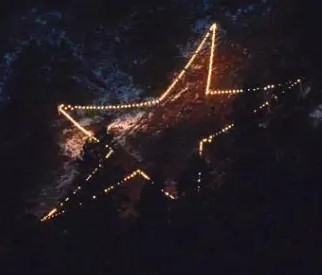- Crime Scene Drawings
- Evidence
- DNA UM1 Profile
- CoraFiles
- Horita's DNA/Bode Notes
- Drive-Stun Wounds
- FGG Policy
- Morrissey w/Silverman
- Dougherty w/Silverman
- Victim Rights Act
- Victim Shoes
- Ransom Note
- Autopsy Report
- Thomas Deposition
- JBRCE Timeline
- 911 Call
- Acronyms
- Body
- Body - Internal
- Body - Head
- Body - Neck
- Book List
- Burke Did It?
- Clothing
- Cords
- Cover Up?
- DNA/Blood
- Duct Tape
- Evidence Interpretation
- Fibers
- Foreign Faction
- Friends
- Intruder
- Intruder - Sex Offender
- Intruder - Sexual Predator
- Intruder - Aquaintance
- John Mark Karr
- Neighbors
- Patsy & John Killers?
- Patsy
- Pineapple
- Prior Abuse?
- Ransom Note
- RN Comparisons
- RN Interpretations
- RN Movie Comparisons
- RN Who Wrote It?
- Staging
- Stun Gun
- Worked for Ramseys
- Who is Who in the Case?
- pdf Library
Forensic Genetic Genealogical DNA Analysis and SearchingUnited States Department of Justice Interim Policy
The purpose of this interim policy is to promote the reasoned exercise of investigative, scientific, and prosecutorial discretion in cases that involve forensic genetic genealogical DNA analysis and searching (‘FGGS’). It provides guidance to Department agencies when formulating a thoughtful and collaborative approach to important interdisciplinary decisions in cases that utilize this investigative technique. Collaboration between investigators, laboratory personnel, and prosecutors is important because the decision to pursue FGGS may affect privacy interests, the consumption of forensic samples, and law enforcement’s ability to solve violent crime.
The Department must use FGGS in a manner consistent with the requirements and protections of the Constitution and other legal authorities. Moreover, the Department must handle information and data derived from FGGS in accordance with applicable laws, regulations, policies, and procedures. When using new technologies like FGGS, the Department is committed to developing practices that protect reasonable interests in privacy, while allowing law enforcement to make effective use of FGGS to help identify violent criminals, exonerate innocent suspects, and ensure the fair and impartial administration of justice to all Americans.
A putative perpetrator is one or more criminal actors reasonably believed by investigators to be the source of, or a contributor to, a forensic sample deposited during, or incident to, the commission of a crime. It is also a requirement of submitting a profile to CODIS that it must be attributed to the putative perpetrator. The putative perpetrator in the JonBenet Ramsey Case is UM1. This Policy emphasizes the value of the term Putative Perpetrator of the crime scene.
The reason UM1 is in CODIS is because he is the Prime Suspect in the Murder of JonBenet Ramsey, the perpetrator identified through FGGS SNP, and his STR DNA. From what I can gather from the information detailed in the policy, I would hope JonBenet's Case is also linked into VICAP. And I can also see where there could be risks associated with the testing that might present roadblocks, but more information will be known that might produce another lead to the Prime Suspect. UM1 needs to be identified or JonBenet will never find justice. I guess, Justice needs to find her.
The Department of Justice issued an interim policy in Nov 2019 that outlines informative details about Forensic Genetic Genealogy (FGG). These are highlights of the program which as far as I know have not been updated and would pertain to the JonBenet murder. While usually used in Cold Cases, its guidelines on when it can be used includes when 'a case involves what is reasonably believed by investigators to be the unidentified remains of a suspected homicide victim, or when the circumstances surrounding the criminal act(s) present a substantial and ongoing threat to public safety or national security'.
Case Criteria
- 1 - Investigative agencies may initiate the process of considering the use of FGGS when a case involves an unsolved violent crime and the candidate forensic sample is from a putative perpetrator,
- 2 - or when a case involves what is reasonably believed by investigators to be the unidentified remains of a suspected homicide victim.
- 3 - In addition, the prosecutor, may authorize the investigative use of FGGS for violent crimes or attempts to commit violent crimes other than homicide or sexual offenses when the circumstances surrounding the criminal act(s) present a substantial and ongoing threat to public safety or national security.
- 4 - Before an investigative agency may attempt to use FGGS, the forensic profile derived from the candidate forensic sample must have been uploaded to CODIS, and subsequent CODIS searches must have failed to produce a probative and confirmed DNA match.
- 5 - The investigative agency with jurisdiction of either the crime or the location where the unidentified human remains were discovered (if different) must have pursued reasonable investigative leads to solve the case or to identify the unidentified human remains.
- 6 - Finally, when applicable, relevant case information must have been entered into the National Missing and Unidentified Persons System (‘NamUs’) and the Violent Criminal Apprehension Program (‘ViCAP’) national database.
About Forensic Genetic Genalogy ...
- 1 - Forensic genealogy is law enforcement’s use of DNA analysis combined with traditional genealogy research to generate investigative leads for unsolved violent crimes.
- 2 - Forensic genetic genealogical DNA analysis (‘FGG’) differs from STR DNA typing in both the type of technology employed and the nature of the databases utilized. FGG examines more than half a million single nucleotide polymorphisms (‘SNPs’), which replace the STR DNA markers analyzed in traditional forensic DNA typing. These SNPs span the entirety of the human genome. This allows scientists to identify shared blocks of DNA between a forensic sample and the sample donor’s potential relatives. Recombination or reshuffling of the genome is expected as DNA from each generation is passed down, resulting in larger shared blocks of identical DNA between closer relatives and shorter blocks between more distant relatives. Due to predicted levels of recombination between generations, it is possible to analyze these blocks of genetic information and make inferences regarding potential familial relationships.
- 3 - Department laboratories currently do not analyze SNPs during forensic DNA casework. Thus, in appropriate cases, it is necessary to outsource biological material to vendor laboratories that perform FGG. After a forensic or reference sample is genotyped by a vendor laboratory, the resulting FGG profile is entered into one or more publicly-available open-data personal genomics DNA databases or direct-to-consumer genetic genealogy services (‘DTC service(s)’).
- 4 - The FGG profile is then compared by automation against the genetic profiles of individuals who have voluntarily submitted their biological samples or entered their genetic profiles into these GG services (‘service users’). A computer algorithm is used to evaluate potential familial relationships between the (forensic or reference) sample donor and service users. It is important to note that personal genetic information is not transferred, retrieved, downloaded, or retained by GG service users — including law enforcement — during the automated search and comparison process. In addition, the investigative use of FGGS involves different DNA technologies, genetic markers, algorithms, and databases from those used by CODIS. Information and data derived from FGGS is not, and cannot be, uploaded, searched, or retained in any CODIS DNA Index.
Limitations
- 1 - If the search of an FGG profile results in one or more genetic associations, the GG service typically generates and provides the service user with a list of genetically associated service usernames along with an estimated relationship and (in some cases) the amount of DNA shared by those individuals. A genetic association means that the donor of the (forensic or reference) sample may be related to a service user. However, information derived from genetic associations is used by law enforcement only as an investigative lead. Traditional genealogy research and other investigative work is needed to determine the true nature of any genetic association.
- 2 - A suspect shall not be arrested based solely on a genetic association generated by a GG service. If a suspect is identified after a genetic association has occurred, STR DNA typing must be performed, and the suspect’s STR DNA profile must be directly compared to the forensic profile previously uploaded to CODIS. This comparison is necessary to confirm that the forensic sample could have originated from the suspect.






















